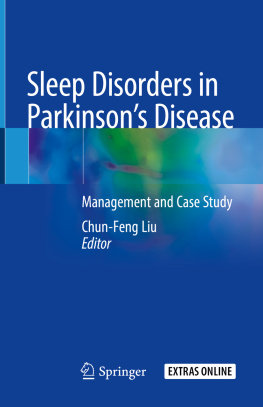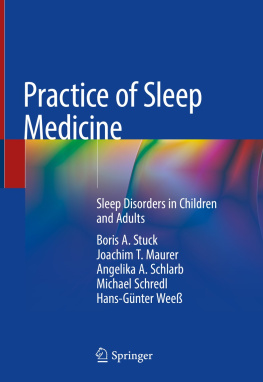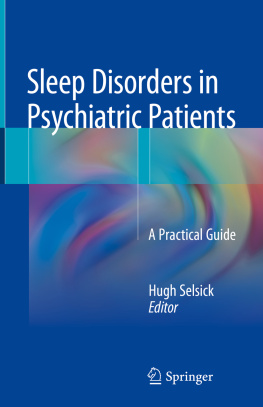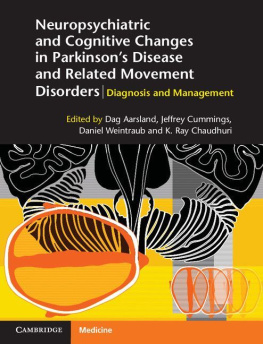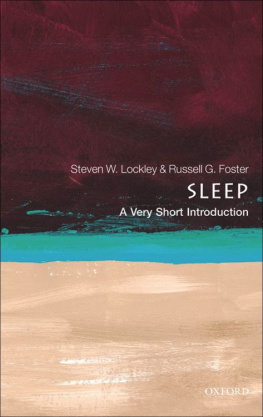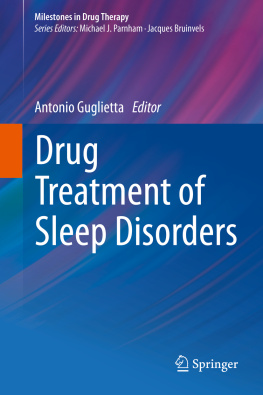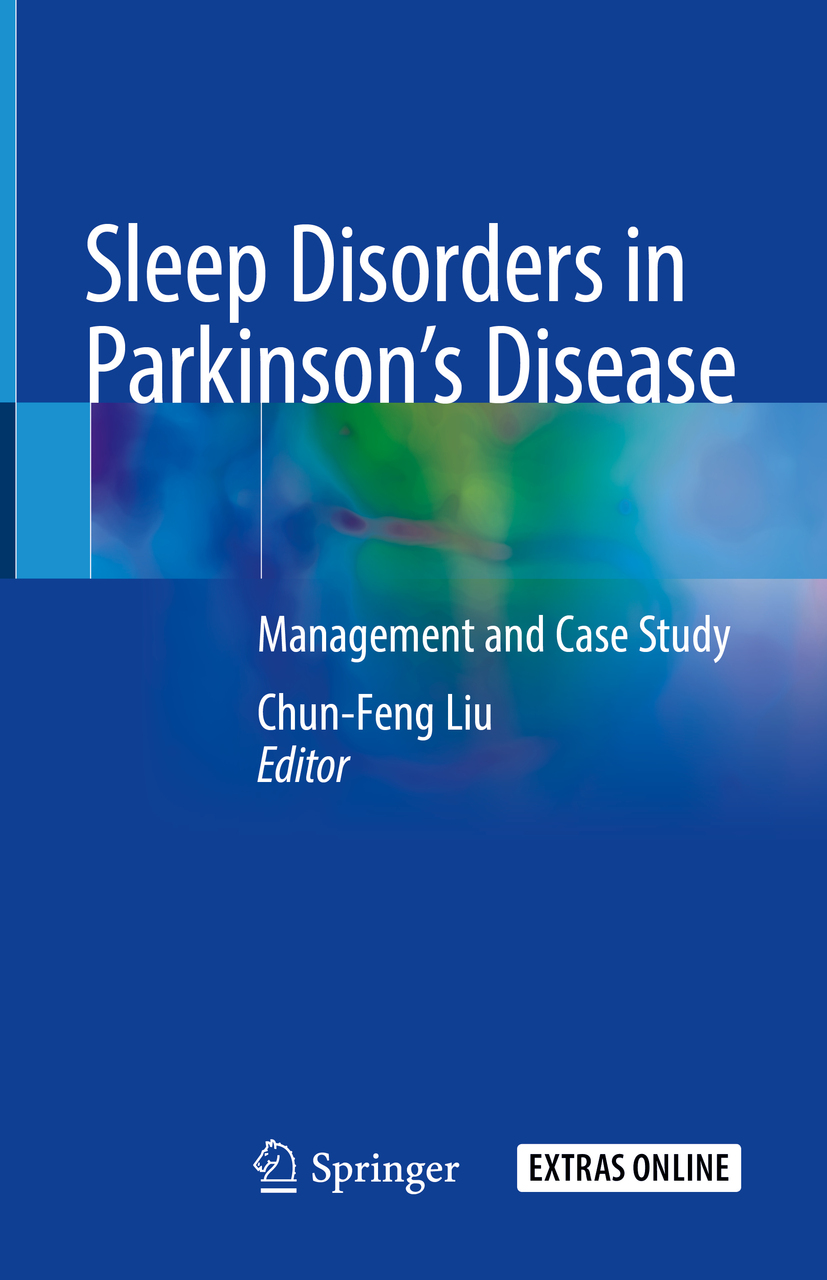Sleep Disorders in Parkinsons Disease
Management and Case Study
Editor
Chun-Feng Liu
Department of Neurology, Second Affiliated Hospital of Soochow University, Suzhou, Jiangsu, China
ISBN 978-981-15-2480-6 e-ISBN 978-981-15-2481-3
https://doi.org/10.1007/978-981-15-2481-3
Springer Nature Singapore Pte Ltd. 2020
This work is subject to copyright. All rights are reserved by the Publisher, whether the whole or part of the material is concerned, specifically the rights of translation, reprinting, reuse of illustrations, recitation, broadcasting, reproduction on microfilms or in any other physical way, and transmission or information storage and retrieval, electronic adaptation, computer software, or by similar or dissimilar methodology now known or hereafter developed.
The use of general descriptive names, registered names, trademarks, service marks, etc. in this publication does not imply, even in the absence of a specific statement, that such names are exempt from the relevant protective laws and regulations and therefore free for general use.
The publisher, the authors, and the editors are safe to assume that the advice and information in this book are believed to be true and accurate at the date of publication. Neither the publisher nor the authors or the editors give a warranty, expressed or implied, with respect to the material contained herein or for any errors or omissions that may have been made. The publisher remains neutral with regard to jurisdictional claims in published maps and institutional affiliations.
This Springer imprint is published by the registered company Springer Nature Singapore Pte Ltd.
The registered company address is: 152 Beach Road, #21-01/04 Gateway East, Singapore 189721, Singapore
Preface
Sleep disorders are common non-motor manifestations in Parkinsons disease (PD). In China, the prevalence of PD patients with sleep disturbance ranges from 47.66 to 89.10%. Sleep disorders usually have a significant negative impact on quality of life and may also serve as markers to identify patients in the preclinical stage of PD.
There are different types of sleep disturbances in patients with PD such as insomnia, excessive daytime sleepiness, rapid eye movement sleep behavior disorders, restless legs syndrome, and sleep-disordered breathing. Because PD has a variety of clinical manifestations, sleep disorders are most easy to be overlooked. Standardized assessment and management of PD patients with sleep disturbances will be beneficial to improve the overall quality of diagnosis, treatment, and prognosis.
The past decade has witnessed major advances in the understanding of sleep physiology and pharmacology. However, sleep problems of PD have their unique characteristics, either related to disease itself or drugs. In order to provide a better understanding of the mechanisms that underlie sleep disorders in PD, we are pleased to invite very experienced and senior experts to convert this evidence intoManagement Recommendations on Sleep Disturbance of Patients with Parkinsons Disease. I am grateful to them for their hard work and for their expertise. However, considering that these recommendations into practice might have been problematic, many case reports in this book would make learning and understanding more visual, lifelike, and convenient.
This book aims to provide a comprehensive overview to advances of PD-related sleep disorders and give a practical guidance to clinicians and scientists on management of sleep disorders in PD, not merely scientists and clinicians, even to present a complete knowledge structure to the general population.
We also found that there was a lack of large clinical randomized controlled trials. We hope that this book will not only aid current treatment of the disease, but will also stimulate efforts to improve future management more quickly than has been possible to date.
Chun-Feng Liu
Suzhou, China
December 2019
Acknowledgments
This book is supported by National Key R&D Program of China (2017YFC0909100) and Jiangsu Provincial social development projects (BE2018658).
Contents
Part IGeneral Concepts
Cheng-Jie Mao and Chun-Feng Liu
Wei-Min Qu , Ze Zhang , Huan-Ying Shi and Zhi-Li Huang
Part IIClassification of Sleep Disorders in Parkinsons Disease
Tao Wang
Hua Hu and Chun-Feng Liu
Xiao-jing Gu , Bei Cao and Hui-fang Shang
Kang-Ping Xiong and Chun-Feng Liu
Xiao-jing Gu , Bei Cao and Hui-fang Shang
Yun Shen and Chun-Feng Liu
Guo-Dong Huang and Ya-Li Wang
Yun Shen and Chun-Feng Liu
Springer Nature Singapore Pte Ltd. 2020
C.-F. Liu (ed.) Sleep Disorders in Parkinsons Disease https://doi.org/10.1007/978-981-15-2481-3_1
1. An Overview of Parkinsons Disease
Cheng-Jie Mao
(1)
Department of Neurology, The Second Affiliated Hospital of Soochow University, Suzhou, China
Abstract
Parkinsons disease (PD) is the second most prevalent neurodegenerative disease in the nervous system after Alzheimers disease (AD).
Although the importance of non-motor symptoms is now widely acknowledged, we are still hampered by a lack of well-conducted research into effective treatments.
Regardless of certain possible pathogenesis, including aging, environmental toxicant, and heredity, the authentic cause of PD has still been remained uncovered so far. Pre-warning screening of PD before motor symptoms begin is one of the scientific hot issues and also an essential way to early diagnosis in need for thorough exploration.
In addition, progression of PD may depend on many unidentified pathogenic factor. Screening for early warnings may be discovered and enabled by other sensitive markers. There is a long way to go for discovering and establishing other sensitive and specific markers for early screening. It remains uncovered how we can know about physiological states and how we can create a better individualized way of screening depending on various group of people at risk applied to very early stage.
Keywords
Parkinsons disease Pathogenesis Premotor stage Non-motor symptoms Pre-warning screening
Parkinsons disease (PD) is the second most prevalent neurodegenerative disease in the nervous system after Alzheimers disease (AD), which is caused by -synuclein aggregation, leading to subsequent dopaminergic degeneration in substantia nigra and striatum. More than 75% of dopamine neurons have died when motor symptoms occurred. The first detailed description of 6 PD patients by James Parkinson centuries ago consists of both motor symptoms, with tremor, rigidity, bradykinesia, postural instability included, and non-motor symptoms, which contains fatigue, somnipathy, hypersalivation, urinary and defecating disorder, etc.
Regardless of certain possible pathogenesis, including aging, environmental toxicant, and heredity, the authentic cause of PD has still been remained uncovered so far. In fact, according to Braaks staging of sporadic Parkinsons disease, changes have begun to be witnessed on dopaminergic neurons almost 10 years before motor symptoms rises.

